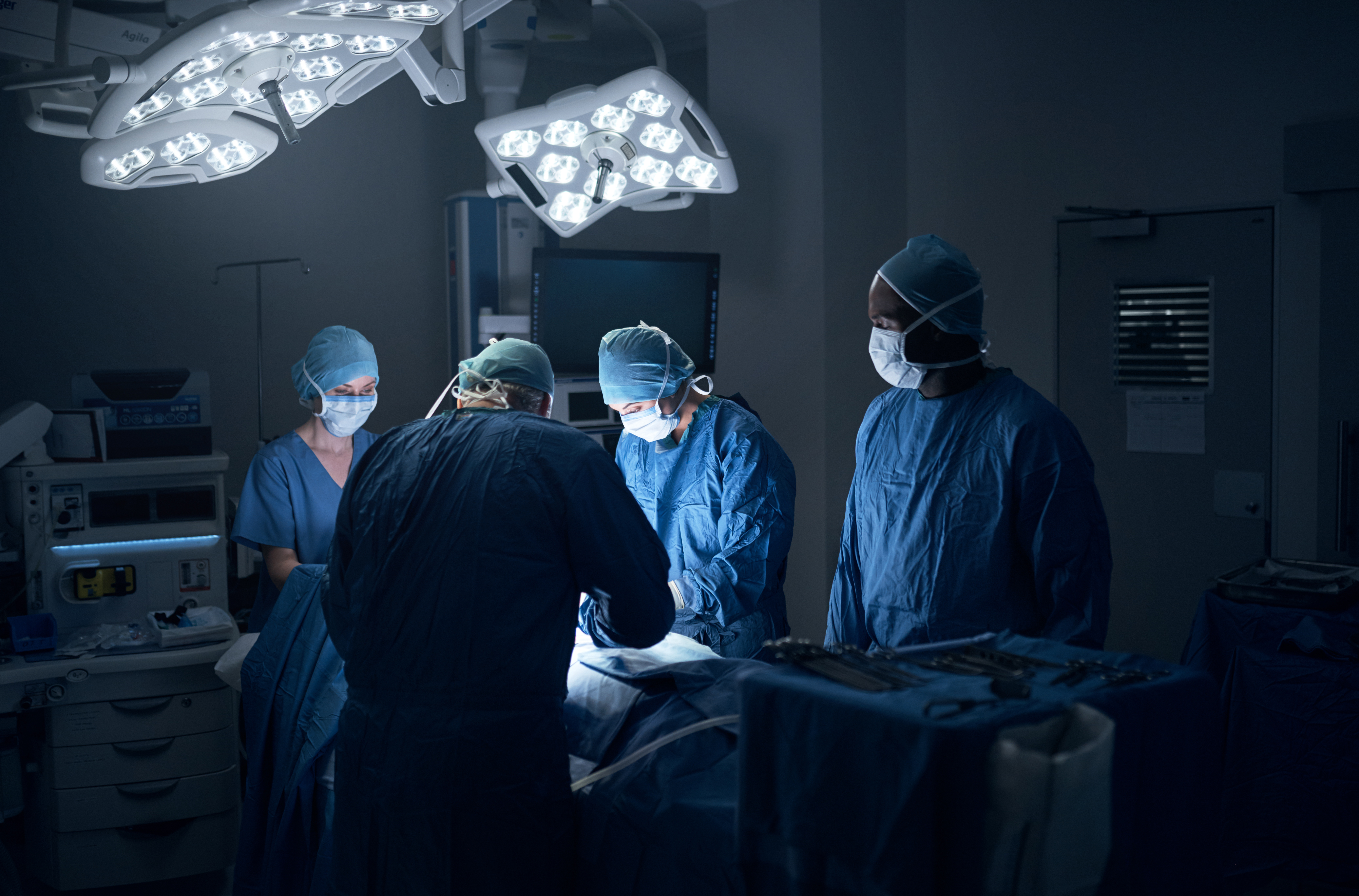
Complex surgical procedures, innovative anesthetic techniques and the need to protect a patient’s airways contribute to the requirement for mechanical ventilation during general anesthesia.1 Anesthesia ventilators are specifically designed to fit the settings associated with general anesthesia, and may be necessary before, during and after a procedure.1 After all, general anesthetic drugs affect breathing control and the activity of respiratory muscles, and surgery-related positioning of patients and potential displacement of intraabdominal and thoracic organs can further affect ventilation.1 General anesthesia reduces functional residual capacity (FRC), which results in lower lung volume2 and elasticity3 and increased airway resistance.3 Positive end-expiratory pressure (PEEP) is a ventilation technology that can increase FRC during general anesthesia, thus combatting the respiratory complications that may arise throughout the perioperative period.3
The technology of PEEP is fairly complex. PEEP works to prevent airways from closing and alveoli (tiny air sacs in the lungs) from collapsing, known as atelectasis.2 Atelectasis is a collapse of lung tissue with loss of volume, which can cause difficulty breathing or respiratory failure.4 Lung collapse is also associated with inflammation and bacterial infections, such as pneumonia.5 Though PEEP may not always improve oxygenation during a procedure,2,3 it is useful in reducing airway closures and atelectasis and is considered protective ventilation.2 PEEP is applied during the end of expiration to maintain alveolar pressure above atmospheric pressure.6 Applying PEEP may affect cardiac function and vital organ perfusion, so anesthesia providers using PEEP should closely monitor patients for complications in non-respiratory organs.6
Several studies have approached the efficacy of PEEP provided during general anesthesia (i.e., extrinsic PEEP).7 According to an article by Hedenstierna, PEEP may be of limited value in patients who are anesthetized for only one to two hours, but could be useful if a procedure lasts for several hours.2 PEEP should be just high enough to keep airways and alveoli open as to not do any harm to the heart or other organs.2 Another recent study by Pereira et al. found that PEEP requirements vary widely among patients receiving mechanical ventilation during anesthesia for abdominal surgery.8 Thus, PEEP settings should be individualized to improve oxygenation, raise driving pressures and prevent postoperative atelectasis.8 Östberg et al. found that in nonabdominal surgery, PEEP was helpful in minimizing atelectasis in healthy lungs and maintaining oxygenation, rendering recruitment maneuvers—which are more sustained, extensive increases in airway pressure9—unnecessary.10 Despite some successes, the perioperative use of PEEP remains controversial and its importance is still unclear.10 Indeed, a systematic review by Barbosa et al. found insufficient evidence on the benefits of intraoperative PEEP for preventing postoperative mortality and respiratory complications.11 While PEEP may be vital for patients with acute respiratory distress, its role in general anesthesia is still up for debate given limited evidence.6
Mechanical ventilation during general anesthesia is complex, often requiring technologies such as PEEP. PEEP works to reduce atelectasis and prevent airway closure, and it may help in maintaining oxygenation as well.2,8,10 Its role in opening alveoli has the potential to prevent postoperative pulmonary complications, but a lack of studies prevents researchers from making conclusions about the efficacy or necessity of intraoperative PEEP. Future studies should focus on the possible short- and long-term benefits of PEEP, along with strategies to individualize PEEP for optimal patient care.
1. Pelosi P, Brusasco C, Abreu MGd. Mechanical Ventilation during General Anesthesia. In: Tobin MJ, ed. Principles and Practice of Mechanical Ventilation. New York: McGraw-Hill Education; December 4, 2012.
2. Hedenstierna G. Optimum PEEP During Anesthesia and in Intensive Care is a Compromise but is Better than Nothing. Turk J Anaesthesiol Reanim. 2016;44(4):161–162.
3. Wahba RW. Perioperative functional residual capacity. Canadian Journal of Anesthesia. 1991;38(3):384–400.
4. Çoruh B, Niven AS. Atelectasis. The Merck Manuals. Kenilworth, NJ: Merck Sharp & Dohme Corporation; April 2019.
5. van Kaam AH, Lachmann RA, Herting E, et al. Reducing atelectasis attenuates bacterial growth and translocation in experimental pneumonia. American Journal of Respiratory and Critical Care Medicine. 2004;169(9):1046–1053.
6. Vargas M, Sutherasan Y, Gregoretti C, Pelosi P. PEEP Role in ICU and Operating Room: From Pathophysiology to Clinical Practice. The Scientific World Journal. 2014;2014:8.
7. Sagana R, Hyzy RC. Positive end-expiratory pressure (PEEP). In: Finlay G, ed. UpToDate. Web: Wolters Kluwer; March 26, 2019.
8. Pereira SM, Tucci MR, Morais CCA, et al. Individual Positive End-expiratory Pressure Settings Optimize Intraoperative Mechanical Ventilation and Reduce Postoperative Atelectasis. Anesthesiology: The Journal of the American Society of Anesthesiologists. 2018;129(6):1070–1081.
9. Hess DR. Recruitment Maneuvers and PEEP Titration. Respiratory Care. 2015;60(11):1688–1704.
10. Östberg E, Thorisson A, Enlund M, Zetterström H, Hedenstierna G, Edmark L. Positive End-expiratory Pressure Alone Minimizes Atelectasis Formation in Nonabdominal Surgery: A Randomized Controlled Trial. Anesthesiology: The Journal of the American Society of Anesthesiologists. 2018;128(6):1117–1124.
11. Barbosa FT, Castro AA, de Sousa‐Rodrigues CF. Positive end‐expiratory pressure (PEEP) during anaesthesia for prevention of mortality and postoperative pulmonary complications. Cochrane Database of Systematic Reviews. 2014(6).

